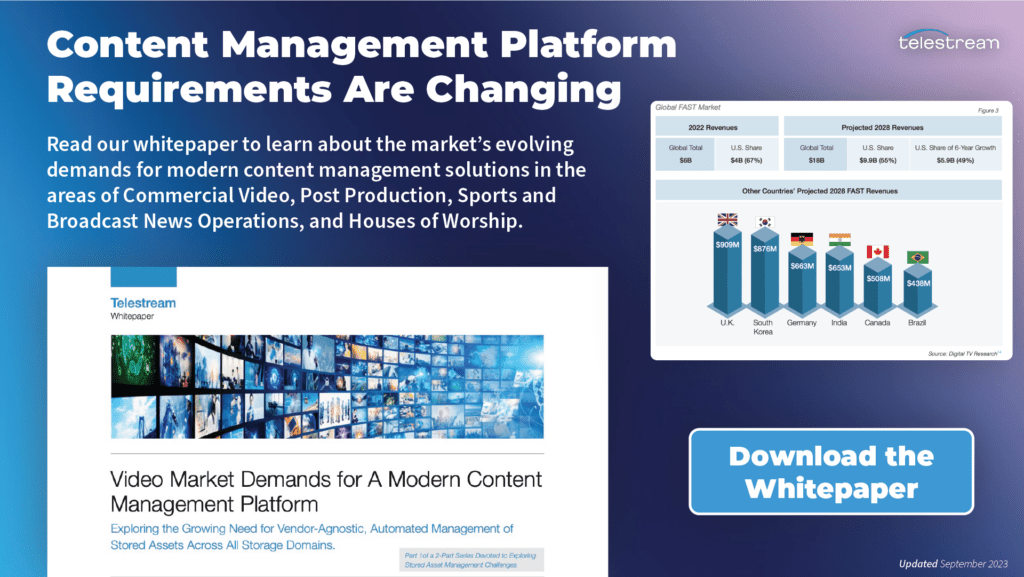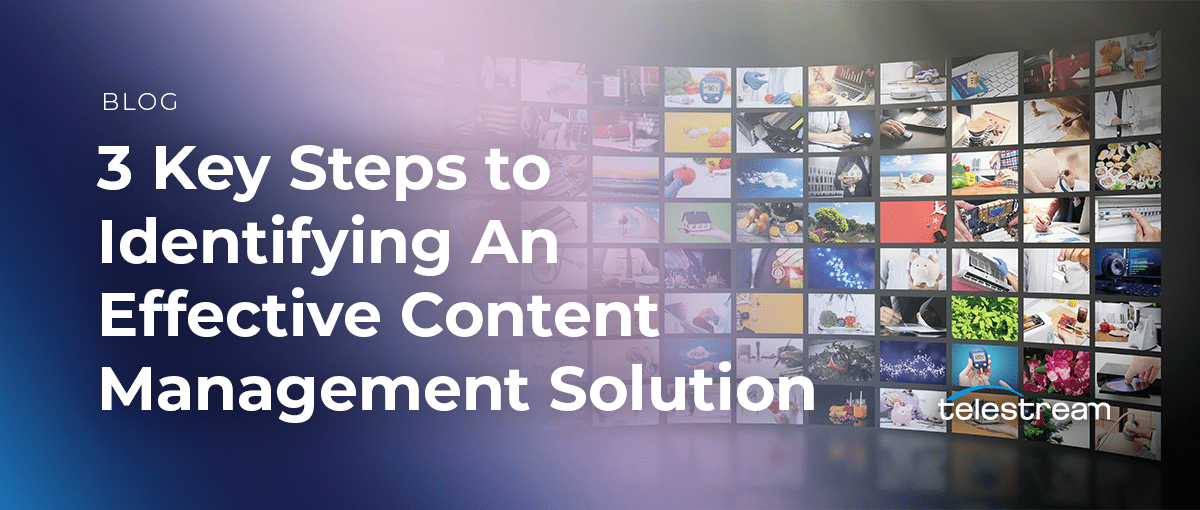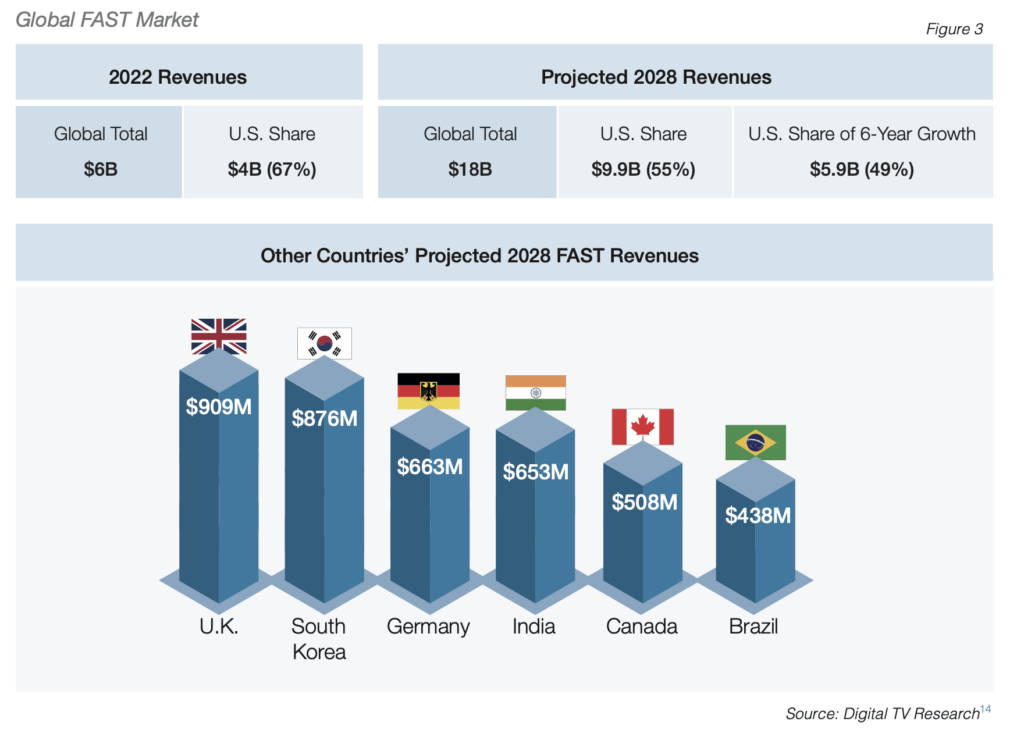Media organizations are likely well aware that the traditional approaches to content management are falling short in today’s rapidly changing landscape. Many existing systems are tailored to work with specific vendor storage platforms, limiting options and stifling potential. Even vendor-agnostic solutions may struggle to manage assets across different storage systems. These obstacles hinder your ability to optimize costs and embrace innovative content production workflows that make best use of on-premises and cloud-based tools. A content management solution should enable video service providers to produce high-value content that engages audiences and grows the business.
Delve into the current state of content management platforms and understand key requirements for overcoming existing limitations. Explore the traits of a next-generation solution, and how it can empower content producers and distributors to stay ahead in the ever-evolving market.
Step 1: Understanding the Current Content Management Problem
We recognize there is an urgent need for a highly-automated, multi-tiered approach to managing storage resources. Flexibility is the key to success in this domain. A next-generation solution can unlock the full potential of your assets, regardless of where they are stored.
We recently published part 1 of a 2-part whitepaper series that further enumerates these details. It explores the market demands for new content management solutions based on underlying trends we have observed in broadcasting and content production. For example, 92% of companies that produce significant volumes of video are pursuing multi-cloud strategies. Over 80% are employing hybrid strategies that include public and private clouds. With 99% of cloud storage users incurring planned or unplanned egress fees, understanding how content management workflows can be streamlined and optimized with modern technology is becoming increasingly important.
Specifically, the whitepaper explores:
- The trends driving the need for a new approach in content management
- The limitations of current Content Management Platforms and the demand for flexibility in managing assets across various storage systems
- The essential features and capabilities of a next-generation Content Management Platform
- The critical role of speed and cost optimization in the video production workflow
- How to make the most of your assets with cost-effective, best-of-breed solutions
Now, it’s worth noting that this is just one piece (albeit a critical one) of the media creation and production pipeline. Other technology solutions can augment and amplify the benefits from a next-generation content management solution. Read our recent blog post about how Telestream’s media creation and production solutions enable intelligent content workflows.
Learn About Demands on Modern Content Management Solutions
Step 2: Identifying the Impact to Your Business
As mentioned earlier, our recent whitepaper dives deep into the market’s evolving demands and requirements with respect to content management solutions. The potential for instant asset retrieval across any storage system which may be in play presents many opportunities for streamlining production workflows in a competitive content landscape.
The trends and market analyses presented in this whitepaper outline these opportunities for providers in five key market segments:
- General Interest Programming
- Post Production Services
- Sports
- Broadcast News Stations
- Houses of Worship
By understanding the unique needs within these specific verticals, we can more clearly see how stored assets contribute to building new audience experiences and succeeding in highly competitive environments. Instant asset retrieval in content production workflows creates new opportunities for growth and audience engagement in an increasingly competitive landscape.
For example, in 2022 over 40% of sports fans worldwide were streaming sports events through online platforms. This has resulted in a staggering influx of global investments into streaming services for sports content – from $2.9 billion in 2021 to $8.5 billion in 2023 according to eMarketer. It’s no wonder that having a cost-effective, efficient, and intelligent solution to empower rapid, high-quality content creation is so top-of-mind.
See How Modern Content Management Solutions Can Impact Your Business
Step 3: Choosing A Better Content Management Solution
We now have a clearer understanding of what the market needs in a next-generation content management solution, centered around the key industries mentioned above. With this in mind, we can outline what a modern content management platform looks like that can satisfy these demands. We know that this solution, regardless of industry, must:
- Accommodate any and all storage systems (cloud, on-prem, and hybrid) without being limited by a single vendor
- Provide intelligent media indexing and search capabilities to provide access to assets anywhere, anytime
- Automatically transfer and store files in whatever storage system makes the most sense for that stage in the asset’s lifecycle
- Seamlessly integrate with any internal or external partner workflow
None of these requirements can be met with a content management solution that is tied to a specific vendor or class of storage systems. Having a solution that checks these above boxes will not only speed up production timelines, but also will reduce the overall costs of storage-related operations. Download our whitepaper to get a better understanding of these needs and the market. Be sure to look out for Part 2 where we will outline how Telestream’s content management solutions can help.



